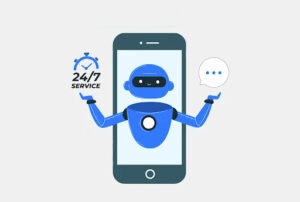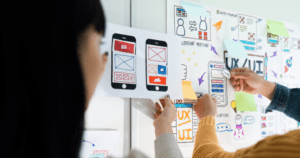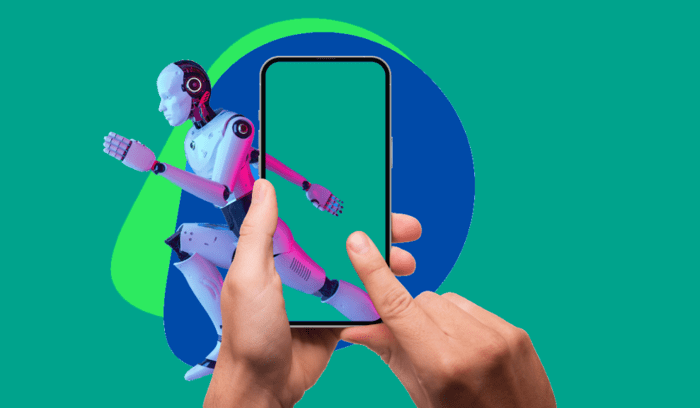Can Automation Really Boost Your E-Commerce ROI?
Imagine running an e-commerce store where marketing runs itself, emails send at the right time, ads optimize in real-time, and customers get personalized recommendations without manual effort. Sounds like a dream? It’s not. E-commerce workflow automation for better ROI is the key to scaling your business while reducing costs and maximizing efficiency.
According to a study by McKinsey, businesses that implement marketing automation see a 20% increase in sales productivity and a 12% reduction in marketing overhead. That’s the power of automation when done right. So, how can you integrate it into your e-commerce strategy?
1. Why Automation is Critical for E-Commerce Success
E-commerce brands juggle multiple marketing channels; email, social media, paid ads, SEO, and more. Manually handling these tasks is inefficient and prone to errors. Automating your marketing efforts ensures consistency, improves customer experience, and ultimately drives maximum ROI in e-commerce.
Key Benefits of Marketing Automation:
Saves Time & Resources: Reduce manual workload and free up your team for strategic tasks.
Enhances Customer Personalization: Automated workflows deliver timely and relevant content.
Optimizes Ad Spend: AI-driven campaigns adjust based on performance, ensuring better ROI.
Increases Conversion Rates: Automated follow-ups and retargeting drive sales efficiently.
2. Automating Email Marketing for Higher Conversions
Email remains one of the highest ROI-generating marketing channels. The key is to use automation to send the right message to the right customer at the right time.
Essential Email Automation Workflows:
Welcome Series: Engage new subscribers with a series of emails introducing your brand and bestsellers.
Abandoned Cart Recovery: Remind customers about their unfinished purchases with personalized discounts.
Post-Purchase Follow-Ups: Upsell or request reviews to encourage repeat business.
Re-engagement Campaigns: Target inactive customers with special offers to win them back.
Example: An online clothing store that automated its abandoned cart emails saw a 35% increase in cart recovery rates.
3. Leveraging AI & Chatbots for 24/7 Engagement

AI-driven chatbots and customer service automation can handle inquiries, recommend products, and even process orders without human intervention.
How AI Chatbots Improve ROI:
Instant Customer Support: Reduce response times and enhance user experience.
Personalized Shopping Assistance: Suggest products based on browsing history.
Automated Upselling & Cross-Selling: Increase average order value seamlessly.
Example: A beauty e-commerce brand implemented an AI chatbot that increased customer retention by 20%.
4. Social Media & Ad Automation for Maximum Impact
Managing multiple social media accounts and ad campaigns manually can drain resources. Automating social media scheduling and paid ad optimization can drastically improve results.
Best Practices for Social & Ad Automation:
Schedule & Optimize Posts: Tools like Buffer and Hootsuite automate posting at peak times.
Dynamic Ad Targeting: Facebook & Google Ads automation optimizes ads based on real-time data.
AI-Powered Bid Adjustments: Automatically allocate budget to the highest-performing campaigns.
Example: A Shopify brand using automated Facebook Ads scaling saw a 50% increase in ROAS.
5. Smart Retargeting: Turning Visitors into Buyers
Not every visitor makes a purchase on their first visit. Retargeting automation ensures they return and convert.
How to Automate Retargeting:
Behavior-Based Retargeting: Show relevant ads based on browsing behavior.
Email & SMS Retargeting: Follow up with special discounts.
Exit-Intent Popups: Capture leads before they leave your site.
Example: An electronics e-commerce store increased conversions by 30% using automated retargeting emails.
6. Personalization at Scale with AI-Driven Product Recommendations

One-size-fits-all marketing no longer works. AI-driven recommendation engines increase average order value (AOV) and customer lifetime value (CLV) by delivering hyper-relevant product suggestions.
Automated Personalization Techniques:
Dynamic Homepage Content: Adjust banners and offers based on user preferences.
Smart Search & Filtering: AI-driven site search improves product discovery.
Personalized Email & SMS Campaigns: Use past purchases to recommend complementary products.
Example: Amazon generates 35% of its revenue from AI-powered product recommendations.
7. Analytics & Reporting Automation for Data-Driven Decisions
If you can’t measure it, you can’t improve it. Automating data tracking and reporting helps optimize marketing efforts for maximum ROI in e-commerce.
What to Automate in Analytics:
Real-Time Performance Dashboards: Track key metrics automatically.
Predictive Analytics: Use AI to forecast trends and optimize inventory.
A/B Testing Automation: Automatically test and implement the best-performing variations.
Example: A fashion retailer using AI analytics reduced ad spend by 25% while increasing revenue.
Ready to Automate & Scale Your E-Commerce Success?
Marketing automation isn’t just a trend—it’s a cornerstone of sustainable e-commerce growth. By harnessing the power of AI, intelligent email workflows, social media automation, and highly personalized retargeting, you can streamline operations while creating seamless customer journeys.
This approach boosts efficiency, elevates engagement, and maximizes ROI, driving long-term success in an increasingly competitive market. Frontlevels can help you automate your e-commerce marketing for sustainable success







7 thoughts on “Automate E-Commerce Marketing for Maximum ROI”
Comments are closed.